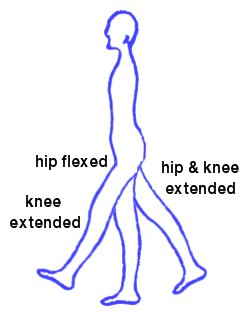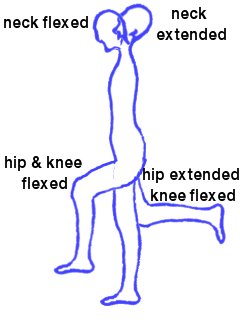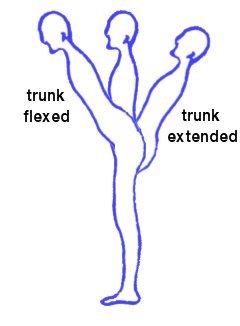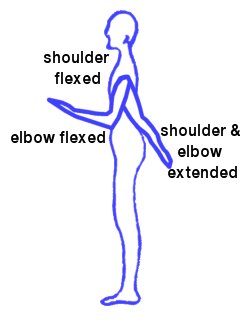Anatomical Terminology
When referring to the body, three planes are used as reference; the coronal, saggital (or median) and transverse planes:
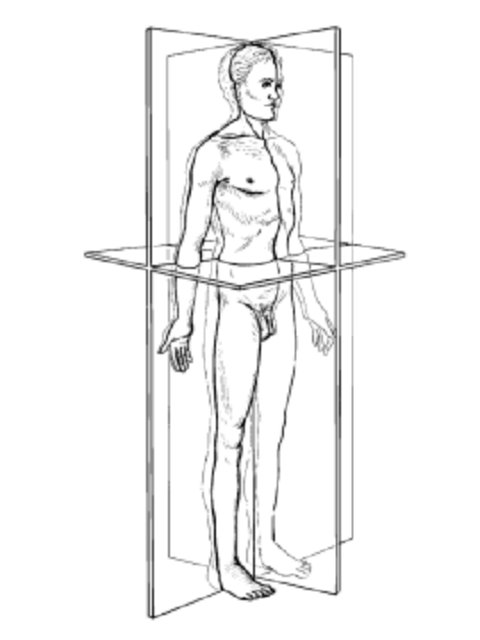
Fig.1 Anatomical Planes.
Show me the Coronal plane
Show me the Saggital plane
Show me the Transverse plane
The anatomical position refers to the body placed in the position illustrated to the left below:
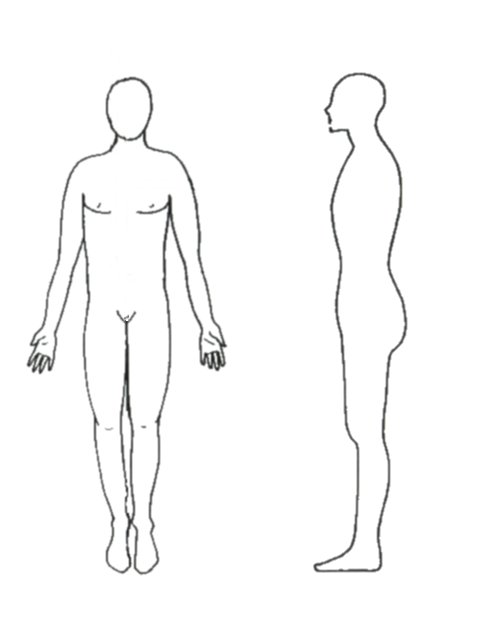
Fig.2 The Anatomical Position.
The planes are absolute terms. When referring to a part of the body, it can be referred to relative to another part of the body.
The terms Lateral and Medial are relative to the Median (the Saggital Plane).
Show me a Lateral position relative to the Median
Show me a Medial position relative to the Median
The terms Superior and Inferior are relative to the Transverse Plane
Show me a Superior position relative to the Transverse Plane
Show me an Inferior position relative to the Transverse Plane
The terms Anterior and Posterior are relative to the Coronal Plane
Show me a Anterior position relative to the Transverse Plane
Show me an Posterior position relative to the Transverse Plane
For example: the chest is inferior to the head, but superior to the abdomen and lower limb.
Movement
The following terms are used when referring to movement in the limbs:
Abduction
Adbuction refers to movement in the coronal plane away from the body. A limb further away from the median is regarded as abducted.
Adduction
Adbuction refers to movement in the coronal plane towards the body. A limb in the anatomical position is regarded as abducted.
Proximal
Proximal is a relative term describing the position of one part of a limb relative to the body. If a part of the limb is proximal, it is regarded as being nearer the body, i.e. the elbow is proximal to the wrist.
Distal
Distal is a relative term describing the position of one part of a limb relative to the body. If a part of the limb is distal, it is regarded as being further from body, i.e. the elbow is distal to the shoulder.
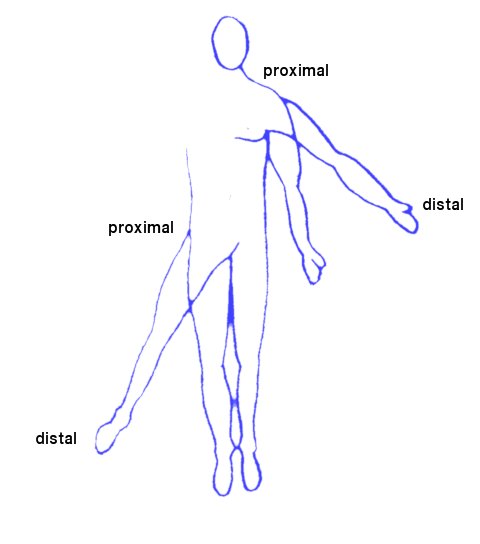
Fig.3 Movement of the limbs.
Show me adduction in the Coronal Plane
Show me abduction in the Coronal Plane
